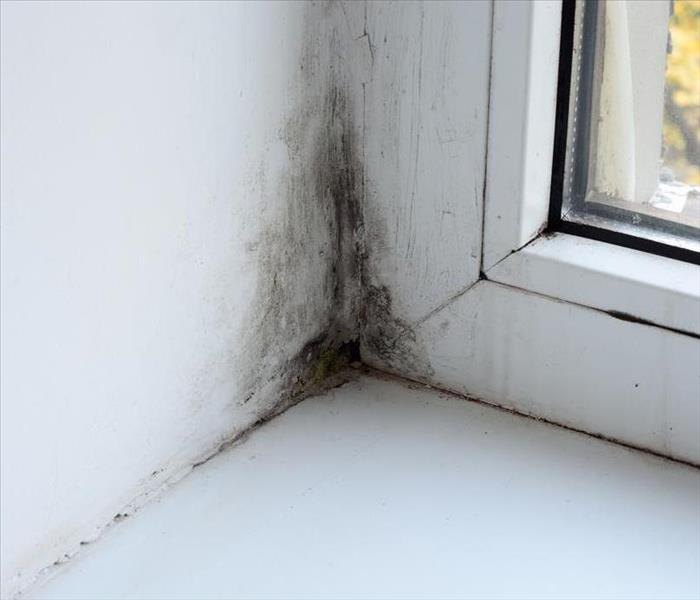4 Questions About Mold and Mildew
3/24/2022 (Permalink)
It's a lot of fun to shop for a new home in New Bern, NC. Your "must have" list is long, and you know that you need to pay attention to the neighborhood, check the pipes under the sink, and actually read the home disclosures. Did you remember to look for mold and mildew? These words strike fear into the hearts of home buyers and sellers alike.
In order to look for signs of mold damage, it's important to know what these terms mean. Here are four questions you might have about mold and mildew.
1. What's the Difference Between Mold and Mildew?
Many people talk about mold and mildew in the same breath. While they are related, there are some key differences. Both are a type of fungus. Mold can grow up and is responsible for the fuzzy green spots on the loaf of bread that was left uneaten for too long. Mildew tends to stay flat. It's usually white and powdery and might be mistaken for dirt or dust. Mold can eat through materials such as drywall or ceiling tiles, causing structural problems. Mildew tends to spread outward and cover large areas but it doesn't have an impact on the structure of a home.
2. Why Do Mold and Mildew Happen?
Both mold and mildew grow in damp or wet environments. Think about areas of your home in which there's regularly a lot of moisture: the kitchen, the bathrooms, the basement. Mold and mildew form because the environment supports their growth. In a bathroom, for example, you might see mildew growth around the window frame. The dust on the window frame acts as food for the mildew spores and the water droplets from the shower and oxygen in the room support its growth.
Some molds and mildew thrive in a warm environment, like a bathroom or kitchen, and some prefer colder places like basements or outdoor crawl spaces. Excess moisture happens in bathrooms and kitchens due to steam. A leaking pipe or condensation building up on appliances can also trigger a fungus-friendly environment.
3. How Can Mold and Mildew Be Prevented?
In order to prevent mold growth, you have to remove or minimize the conditions that support their growth. For example, when you're cooking on the stove or running the shower, keep an exhaust fan going to prevent the buildup of moisture. In very damp areas, such as in the basement, run a dehumidifier. Position furniture appropriately to keep vents open so that air circulates.
4. What Are the Signs of Mold Damage?
Now that you know about mold and mildew, what do you need to keep an eye out for? First, a rotten or musty odor is a sure sign that there is an ongoing problem with mold growth. Walls or floors that look warped can be indicators that significant water damage occurred, giving mold the opportunity to form.
Consult with a mold remediation specialist to determine the extent of the problem before you make an offer on a home. When you know what mold and mildew are and what mold damage looks like, you can better assess the risks when visiting a home you hope to buy.





 24/7 Emergency Service
24/7 Emergency Service
